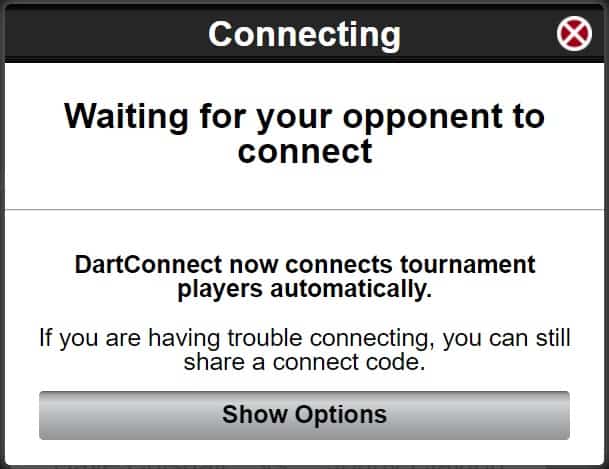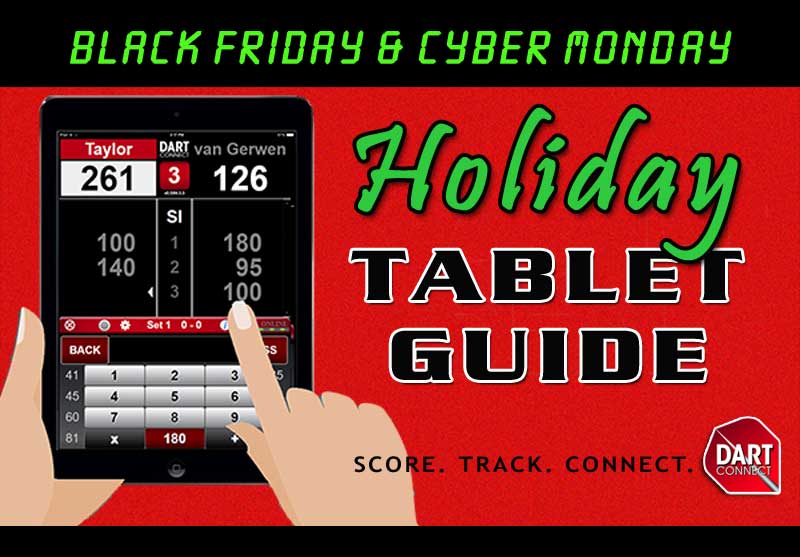5 Key Steps to Starting an Online Singles League

DartConnect League Services is an ideal solution for getting an online singles league up and running quickly. Online leagues can effortlessly transition to in-person play or allow both if Covid-19 restrictions are lifted.
If this is your first league, you can start with friends, family, team mates, small groups, big groups, whatever works! Whether you’re in it just for the fun, or creating a serious league for intense competition, DartConnect will make it less work for you and more fun for the players.
Have a question? Contact:
leagues@dartconnect.com
Get Started Now:
5 key steps
Detailed checklist followed by helpful best practices:
- Define Your League
- Recruit Players
- Create Divisions & Match Schedule
- Request a DartConnect League Portal
- Organize Players & Start Season
1. Define Your League. Create a written plan that includes:
-
-
- The official name of your league
- Signup deadline, start date and target season length (including playoffs)
- Match Format (ideal length is 90-120 minutes) – see recommended formats below
- Rules, including online play guidelines (ex: webcam, makeup matches, etc)
- Player Fee (should cover $5/player DC fee, league expenses and prize funds if applicable)
-
2. Recruit Players
-
-
- Create a signup process and payment method
- Create an email campaign, flyer, website, Facebook Group, etc
- Promote, promote, promote!
-
3. Create Divisions & Match Schedule / Fixtures
-
-
- See best practices below for optimal division structures
- Form divisions by skill level using prior league DCA if possible
- Use free tools to generate a round robin match schedule such as Devenezia or Teamopolis
-
4. DartConnect League Portal:
-
-
- Submit League Signup Form (ideally 1-2 weeks prior to season start)
- Set up league portal website with player and season info
-
5. Organize Players & Start Season
-
-
- Distribute info to players (via email, website, group chat, etc):
- Schedule of Play
- League and player contact info
- Online Match Setup Instructions
- Links to league channel on DartConnect TV
- Monitor league on DCTV
- Distribute info to players (via email, website, group chat, etc):
-
Best Practices
Should you require a webcam?
This decision is extremely important and should be tailored to the type of players and level of competition. DartConnect can easily be used with or without a camera. For more information on how to set up webcams to use with DartConnect, click here.
If the players are serious competitors, are playing for money or prizes, and express concerns about cheating, then requiring a camera is necessary. If players are more casual and friendly, you can get away without requiring it.
Note that you can also make this rule division-specific to accommodate both types of players. Remember that requiring a camera will limit the amount of potential players.
Most online leagues with a camera rule require the video image to clearly show where the darts land, but some may also require a second camera to show the player at the oche. Showing the player should be considered optional for practical reasons.
Regarding Cheating
Cheating is an unfortunate stigma of online darts and there have been some high-profile cases that put a stain on online competition. Even with camera requirements, accusations of dishonest scores can occur. In our experience, it is a rare occurrence in sanctioned competition such as leagues and tournaments, but high profile cases exaggerate how frequently it happens.
The best way to mitigate this issue is to have a clear and written policy with a severe punishment for anyone proven to be cheating. Most perpetrators are easily discovered because of multiple complaints. The majority of players will play honestly and by eliminating the few “bad apples” you can maintain the integrity of the league.
Division Setup
Whether you have one division or multiple divisions, configure your divisions based on the group size, skill levels and type of match schedule you require. Use the following guide as a starting point.
- 5 Players – play each other 3x/season – 12 matches
- 6 Players – play each other 3x/season – 15 matches
- 7 players – play each other 2x/season – 12 matches
- 8 players – play each other 2x/season – 14 matches
- 9 players – play each other 2x/season – 16 matches
- 10 players – play each other 2x/season – 18 matches
If you have multiple divisions, make sure you consider how you wish to structure your post-season. Playoffs can be optional, but if you want to crown league champions, make sure you’ve thought out who qualifies and if you want a different match format for post-season play.
Use free tools to generate a round robin match schedule such as Devenezia or Teamopolis.
Recommended Match Formats
Singles leagues are known for providing a lot of darts, typically long-format matchplay, but must balance the player’s skill level with the total # of legs to ensure that matches remain a reasonable length.
Matches that are too long or too short risk giving players a negative experience. In general, the ideal length for a singles match is 90-120 minutes. Note that, different from a team format, players will be throwing darts for the entire match and may need periodic breaks.
The following suggested formats can be adjusted to fit a wide variety of environments and player skill levels:
We recommend a single set instead of a multi-set format for the majority of groups, especially beginner and intermediate levels.
General Guidelines:
- KEEP IT SIMPLE:
- Make matches all 501 if possible
- If you must add Cricket, limit the # of legs to avoid late finishes
- Use “Random Start” for the first leg, then alternate all remaining legs rather than incorporating a shoot for bull (aka “bull up”)
- Avoid complicated point systems and standings, use something straightforward for ranking, such as # of leg or set wins
- Tailor formats to skill level
- Consider handicapping to allow different level players to play together
Play All vs Best Of
The biggest tradeoff is predictability of the time required to complete a match. A “Play All Legs” format has a fixed # of legs and a “Best Of” format can vary considerably. For this reason we recommend “Play All” for online matches. This also ensures that players get a fulfilling amount of games to play.
Top 2 Recommended Match Formats:
Option 1: Single Set 501
- Beginners: Play All 7 legs or Best of 9 (First to 5)
- Intermediate: Play All 11 Legs or Best of 15 (First to 8)
- Advanced / Pro: Play All 19 Legs or Best of 23 (First to 12)
Option 2: Multi Set – 501 and Cricket
- Beginners: Play All 2 sets / 501 Play All 5 Legs / Cricket Play All 3 Legs
- Intermediate: Play All 2 sets / 501 Play All 7 Legs / Cricket Play All 3 Legs
- Advanced / Pro: Play All 2 sets / 501 Play All 11 Legs / Cricket Play All 5 Legs
Option 3: Set Play – 501
This format is best for advanced players, but if necessary can be adapted for lower skill groups.
- Beginners: Best of 3 sets / Each Set Play All 3 Legs or Best of 3 Legs
- Intermediate: Best of 5 sets / Each Set Play All 3 Legs or Best of 3 Legs
- Advanced / Pro: Best of 5 sets / Each Set Play All 5 Legs or Best of 5 Legs
If you want to include Cricket to provide variety, we advise no more than one set to limit “marathon” legs affecting match length. You may also want to play fewer legs for a cricket set than a 501 set.
While 501 SIDO is the “standard” game played around the world, for beginners you can change this to 301, 401, or other starting score to adjust match lengths to the players’ skill level.
Additional Resources
- DartConnect Online Singles League – General Info
- Online Match Setup Instructions
- League Pricing – Singles Leagues $5/player
- General guide to Online Play using DartConnect






